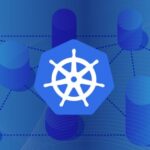Using DaemonSets to manage Kubernetes services is a powerful way to help scale and manage your containers. A DaemonSet ensures that all nodes in a cluster run a specific pod. This can be used to deploy system daemons such as log shippers, databases or monitoring agents to every node within the cluster.
A DaemonSet works by creating copies of a pod on each node. It is created by specifying a selector which will be used to find the desired nodes to run the pod. This selector can include specific labels and parameters for nodes within the cluster. The DaemonSet controller will then create a new pod for each node matching this selector. The DaemonSet controller also takes care of tracking the state of the pods being created, scheduling them onto the correct nodes and replacing any unhealthy pods.
To get started with a DaemonSet, you need to define your pod as usual, with the container images, environment variables, and other resources needed. You then add a DaemonSet manifest to your manifest. This manifest contains information about the selector – which nodes the DaemonSet should be deployed to and what labels it should match against. Once the manifest is defined, you can apply the manifest to the cluster. This will create a new DaemonSet object in your Kubernetes namespace and will deploy the pods to all matching nodes.
DaemonSets are a great way to ensure a consistent set of services across all nodes in the cluster. They are particularly useful for when your application relies on specific system daemons being available, or for deployments which need to run on a consistent set of nodes like monitoring agents or backup services.
If you’re looking to simplify the deployment and management of services in Kubernetes, DaemonSets are an ideal way to do so. With their simple setup and automated deployment, they provide an easy way to ensure consistency across your cluster and save you time and effort.



Pingback: Job vs Cronjob in Kubernetes - MtroView